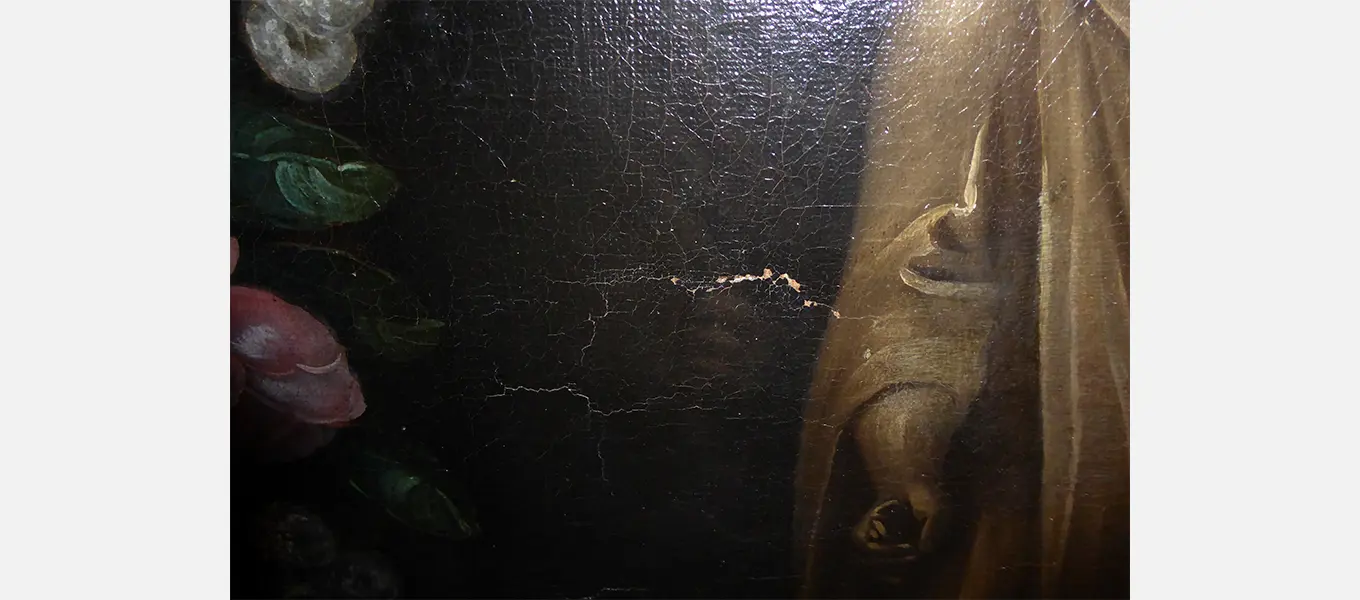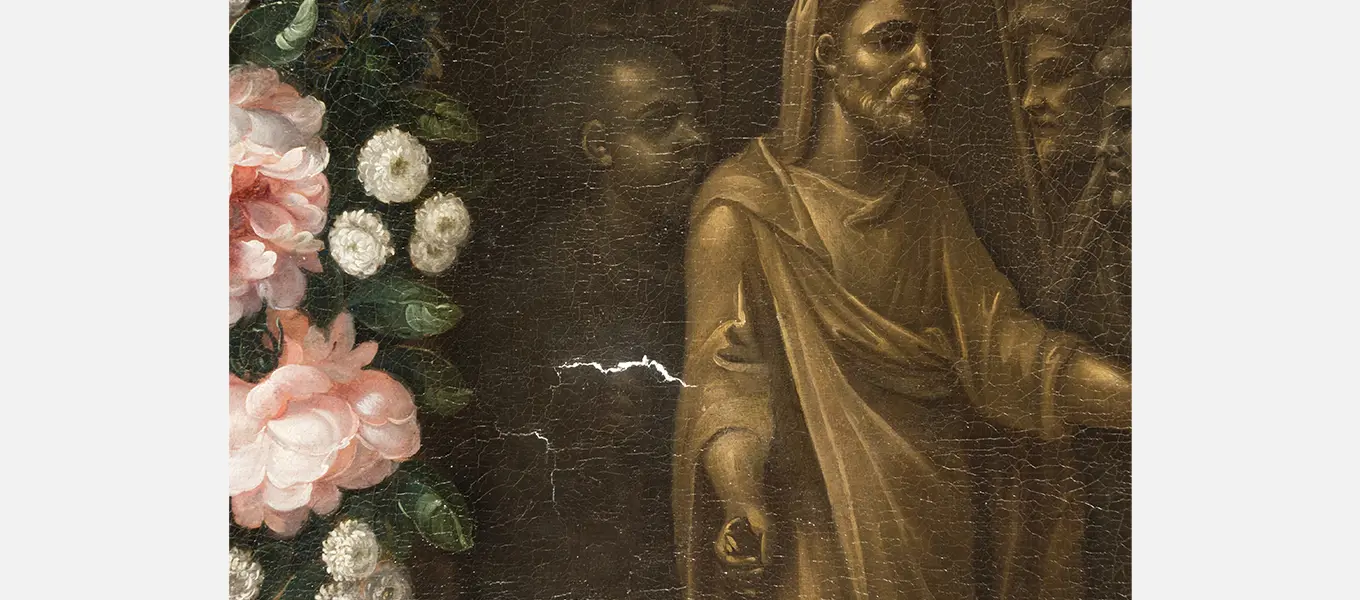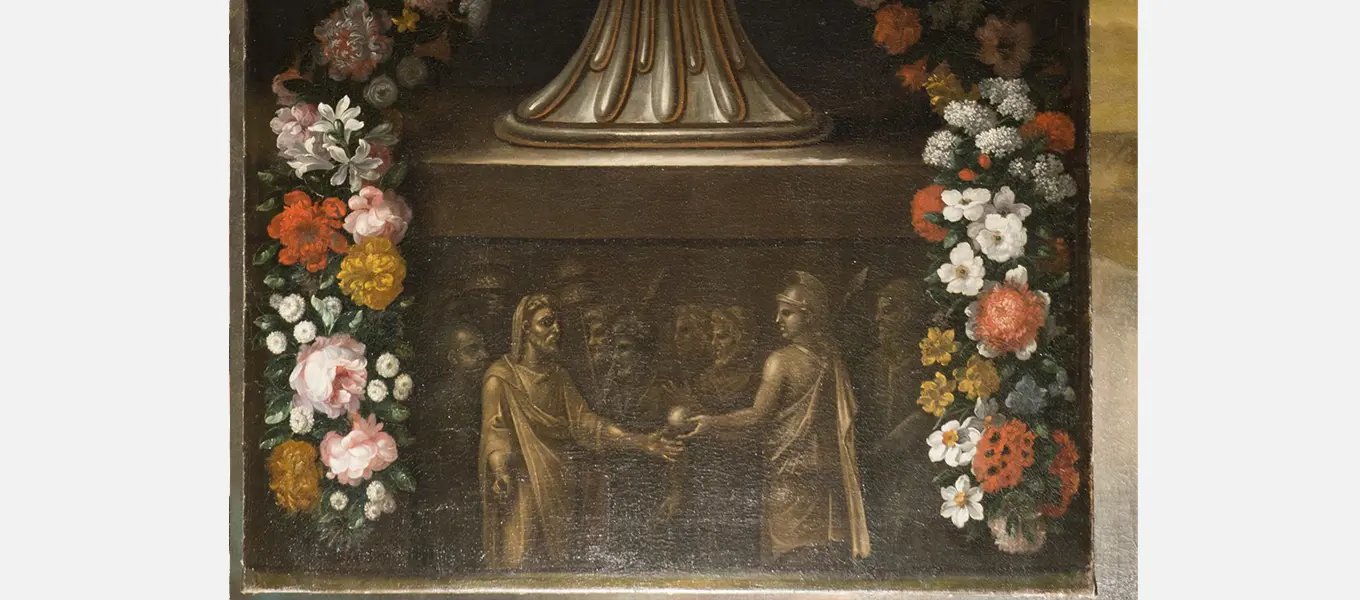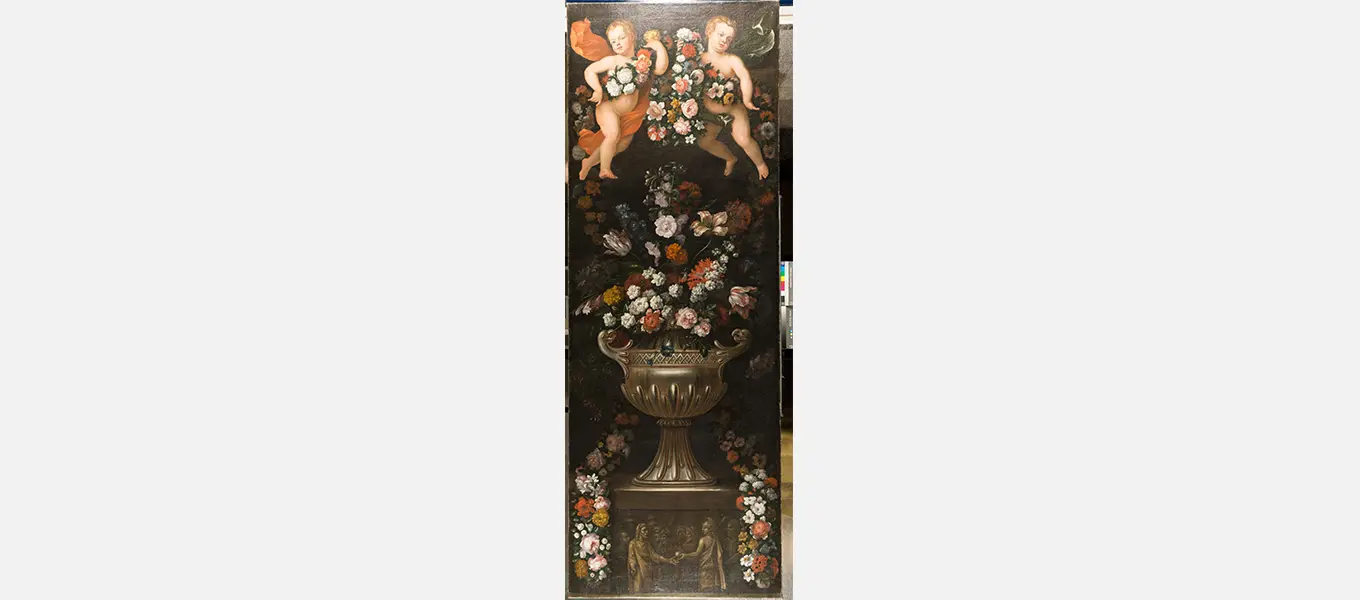As visitors walk down the Chapel Corridor at Chatsworth they are greeted by the sight of many fascinating paintings and sculptures. One of these being the three-metre high decorative floral delight by a follower of French painter Jean-Baptiste Monnoyer (1636-1699).
The painting is a mass of the richest colours, bursting with flowers with two cherubs atop. This subject is characteristic of Monnoyer’s still life paintings. The Devonshire Collections contain other paintings from his studio which were acquired by the 1st Duke of Devonshire (1641-1707).
Unfortunately the painting recently took a knock resulting in a tear in the canvas. Our Collections Team took the opportunity to remove the artwork from display in early 2021, it was then sent to Critchlow and Kukkonen, an experienced picture conservation studio local to Chatsworth, to repair the damage.

A knock to the painting resulted in a tear in the canvas.
Preparing the canvas
To start the process the painting was cleaned to remove surface dust and dirt using cotton wool swabs and de-mineralised water.
Paintings on canvas like this one are complex objects. There is a layer, called a ‘ground’, which is used to prepare the canvas before the paint is applied. Areas of the ground were missing, and the paint was flaking. The damaged areas were consolidated and adhesive was carefully inserted into the cracks and areas of loss using a fine sable brush. The treated area was then gently ironed using a thermostatically controlled spatula to set it.
Turning the painting over, the reverse of the canvas was cleaned using a museum vacuum and dry cleaning sponge. The wood stretcher and cross-bar, which keeps the canvas taut, were then cleaned with a Chamois leather cloth. The conservators also looked to see if the canvas had any distortions, which were smoothed by applying an increasingly heavy series of weights which, over time, achieved the desired result by removing any indentations.

The tear after being cleaned and filled.
Repairing the tear
Then, turning to the tear itself, the conservators had to determine if there were any broken canvas threads which may have been a contributing factor to the movement and subsequent tear within the material. They achieved that by magnifying and transmitting light into the area to detect any problems. As a preventive measure, it was decided to introduce a small amount of textile welding powder, which works to reinforce the weakened and possibly broken canvas threads. The powder was inserted through the paint losses on the front of the canvas, using a fine spatula. A soft sable brush was then used to distribute the welding powder. A thermostatically controlled needle at 90°C then activated the powder and strengthen the thread adhesion.
Once the team were satisfied with the repair, they proceeded to fill and retouch the area. Putty was applied with a small spatula and the texture of the paint was simulated using a scalpel: that process requires an extremely steady hand. Retouching is the careful application of new pigment to fill in lost areas of paint. In this case, the retouching was carried out using dry pigments mixed with chemicals that bind the pigment. The conservators then used their preparations to retouch the lower left and right areas of damage; and applied glazes reduced the appearance of scuff marks in the same areas.

The lower section of the painting after retouching the paint around the tear.
In total the repair of the painting took around a week’s work, and it is now hanging back in the Chapel Corridor.

The painting is now back in place on the Chapel Corridor.
This repair is one of many projects that are regularly undertaken to care for the collection. The work relies on research, the expertise of our curators and the skill of conservators who are specialists in the care and conservation of objects like this. In order to continue this vital work, and meet the charitable objectives of Chatsworth House Trust, we look to everyone one of our visitors for support. The charity relies on income from visitor admissions to the house, garden and farmyard, the Friends and Patrons of Chatsworth programmes as well as sponsorship and grant funding.
Learn more about how you can support the charity by visiting the link below.





